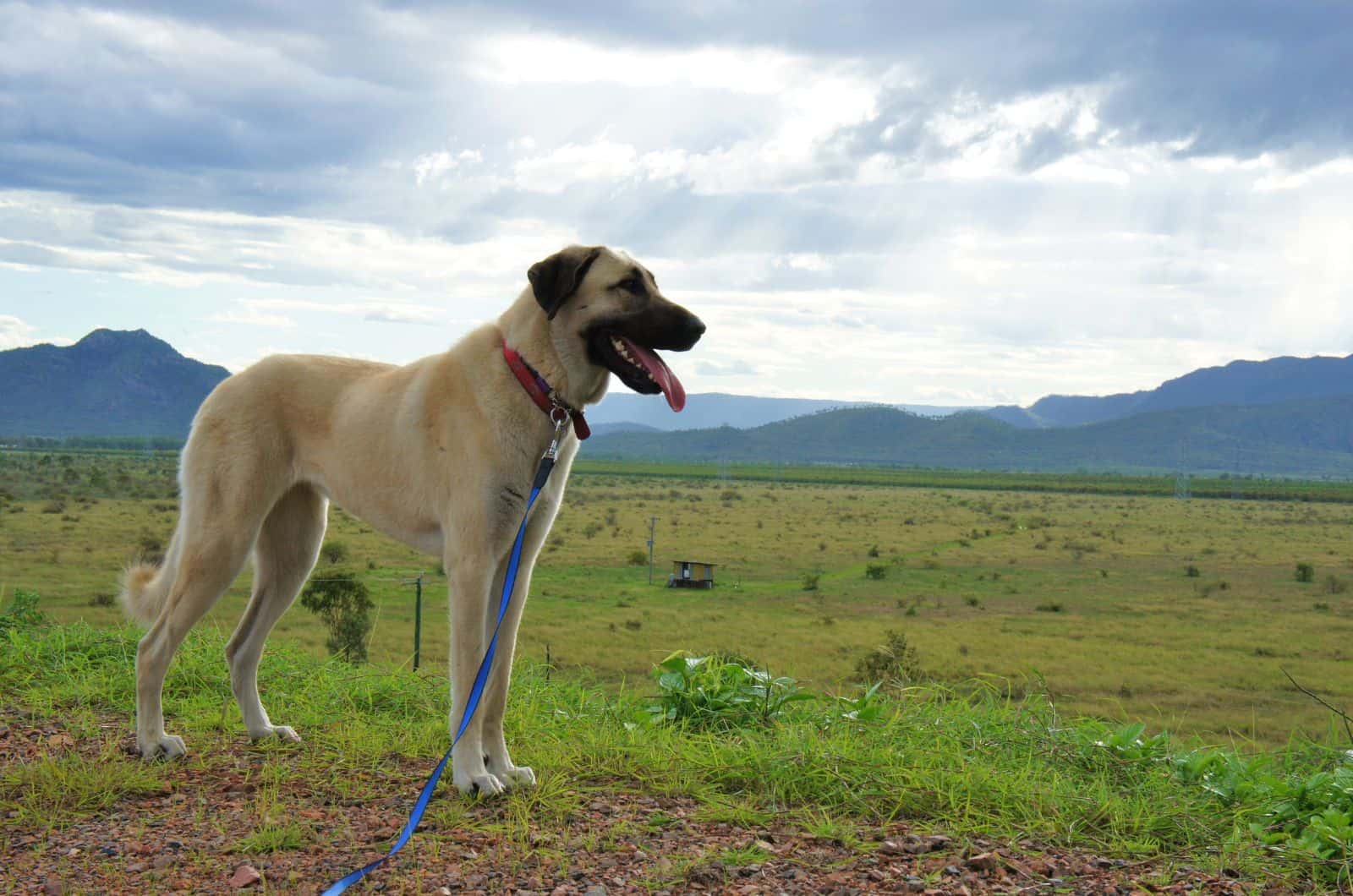If you’re planning to buy or adopt an Anatolian Shepherd, one of the things that you probably want to know is how big they can get. For that very reason, this post brings you the ultimate Anatolian Shepherd growth chart.
Because Anatolian Shepherds are renowned for being massive and intimidating, you should prepare yourself in advance to have adequate space to accommodate one.
They are also useful if you’re searching for a guard dog because they were developed specifically for this role. Despite being ferocious and devoted protectors, they get along well with the family.
Because of their quick adjustment to harsher settings, quick reflexes, and muscular build, Anatolian Shepherds make excellent hunting dogs.
But before we talk more about the details related to their size and weight, let’s get a quick overview of the Anatolian Shepherd growth chart.
Anatolian Shepherd Growth Chart
[table id=681 /]
What Is An Anatolian Shepherd?
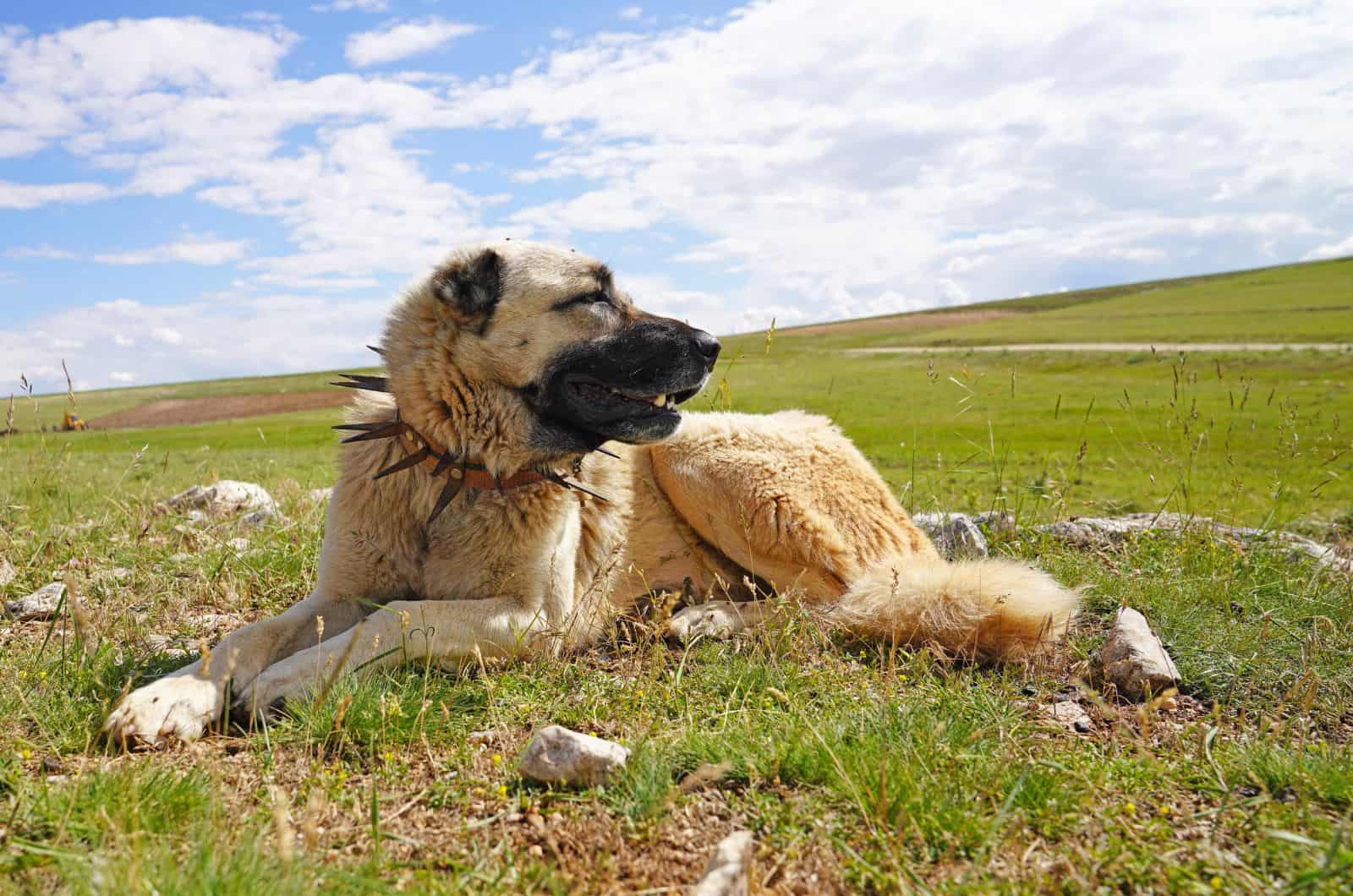
After seeing how their weight grows through the months in the Anatolian Shepherd growth chart, it’s now time for us to talk about the breed in more detail. We’ll start with some more general stuff and then we will switch over to the topic at hand — their growth, size, and weight.
The Anatolian Shepherd dog is an old guardian breed with a long history of use. The most likely sources of this breed’s ancestry are the Tibetan Mastiff and Roman Mollosian battle dogs that arrived in Turkey more than 4,000 years ago.
Even though these large dogs have “shepherd” in their names, they were never actually used as herders — they were working dogs and hunting dogs instead. Koban kopegi, the original Turkish name for this breed, simply translates to shepherd’s dog.
Whether the Anatolian dog is a distinct breed from the Kangal (or Karabash) dog is a matter of debate.
The Anatolian is designed to handle difficult tasks. This dog is big, strong, and tough with excellent agility and endurance. The Anatolian has a strong, fluid gait, a large head, and a good bone structure.
The coat of this breed is made up of a dense undercoat that can be short and rough, with the outer layer being a little longer around the neck and mane. The look is thoughtful, and it gives off the vibe of a strong but composed protector.
Today, however, they are just as used to being companions and family dogs.
How Big Do Anatolian Shepherds Get?
At their physical peak, Anatolians reach from 27 to 29 inches of height at the withers and up to 150 pounds of weight.
Needless to say, they are a giant breed of dog and any prospective owner needs to have that in mind. These dogs need a lot of space and a lot of food.
They are not only tall and heavy, but they also have a generally imposing and striking build. Their bodies are extremely muscular and agile, which further underlines their reputation of being proud and effective guardians.
The dog’s paws are generally a good indicator of its overall size, and it’s safe to say that Anatolians have larger paws than most dogs.
If you are interested in getting one of these dogs for yourself, check out this list of our favorite Anatolian Shepherd breeders.
Anatolian Shepherd Development
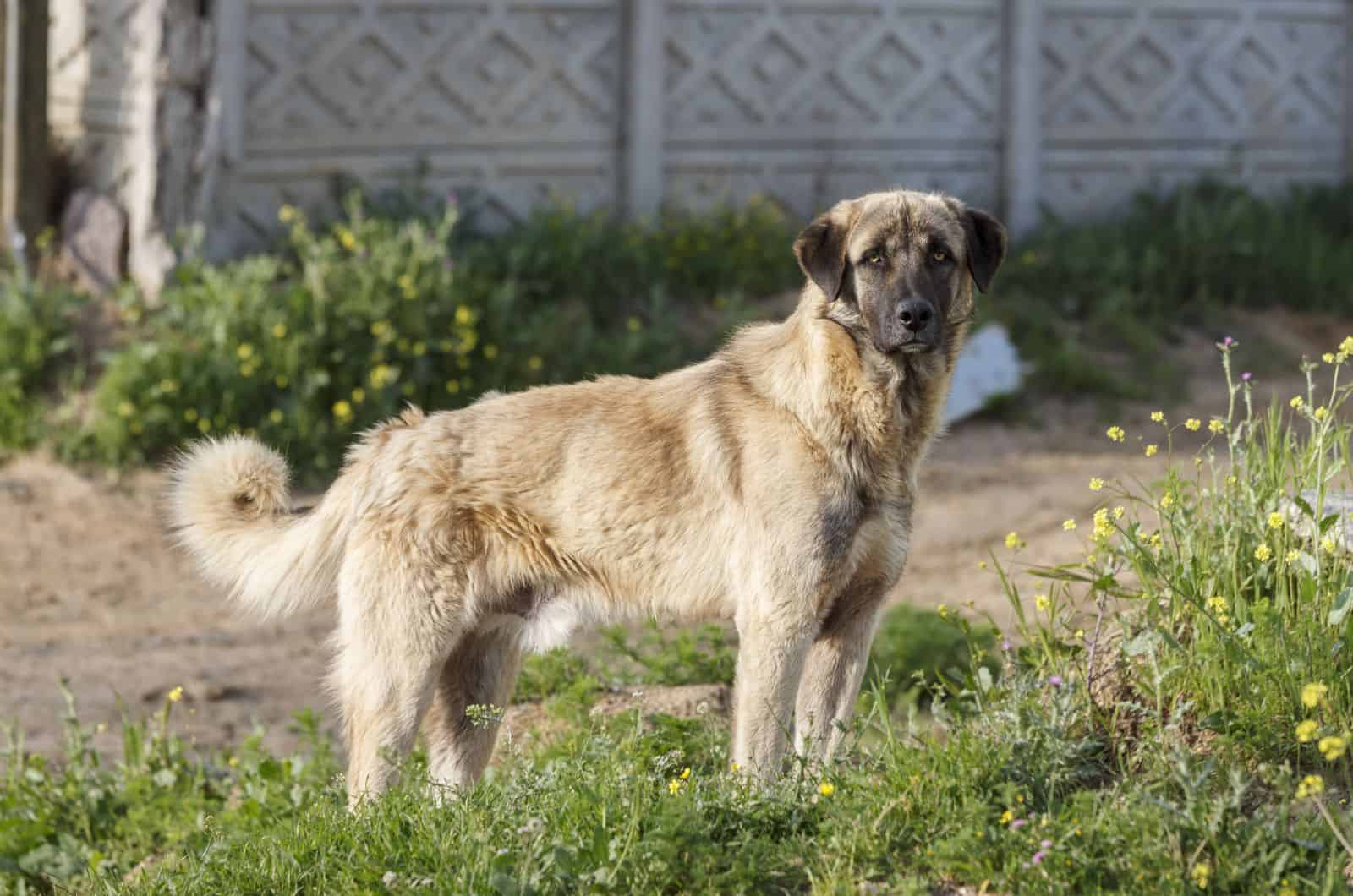
The Anatolian Shepherd growth chart above is a simple yet great visual tool that you can just quickly reference when you want to know how big your Anatolian Shepherd puppy will be at any given age.
But what if you want more info than that? What if you want to more details about their development at certain stages of their puppyhood? Surely, most owners would like to know what to expect in these stages, how they can prepare for it, and when puppies get easier.
Well, fear not, because we have got that covered too. In the following sections, we will be breaking down the various physical and mental changes that occur in the Anatolian’s body during the first 18 months of its development.
It’s time to go deeper than the weight chart.
From Birth To Two Weeks
The Anatolian Shepherd is in a vulnerable stage of development at this point and it desperately needs its mother’s milk and warmth.
Although they are blind and deaf, they are able to taste and smell their moms’ milk. The majority of their time will be spent sleeping and developing. They actually experience their greatest growth and development rate at this point.
They don’t really need much of your attention during this stage.
From Two Weeks To Three Months
Your Anatolian Shepherd puppy will go through a lot of changes at this stage, including weaning and switching from liquid to solid food. If they receive the right nourishment, they will continue to grow quickly.
At this age, nutrition is very crucial, and the switch from milk to solid foods may determine how healthy they are for the rest of their lives. Your Anatolian puppies should weigh between 35 and 45 pounds.
Furthermore, this is the point at which you should start teaching your pup how to follow commands and slowly establishing a steady puppy schedule.
From Three Months To Nine Months
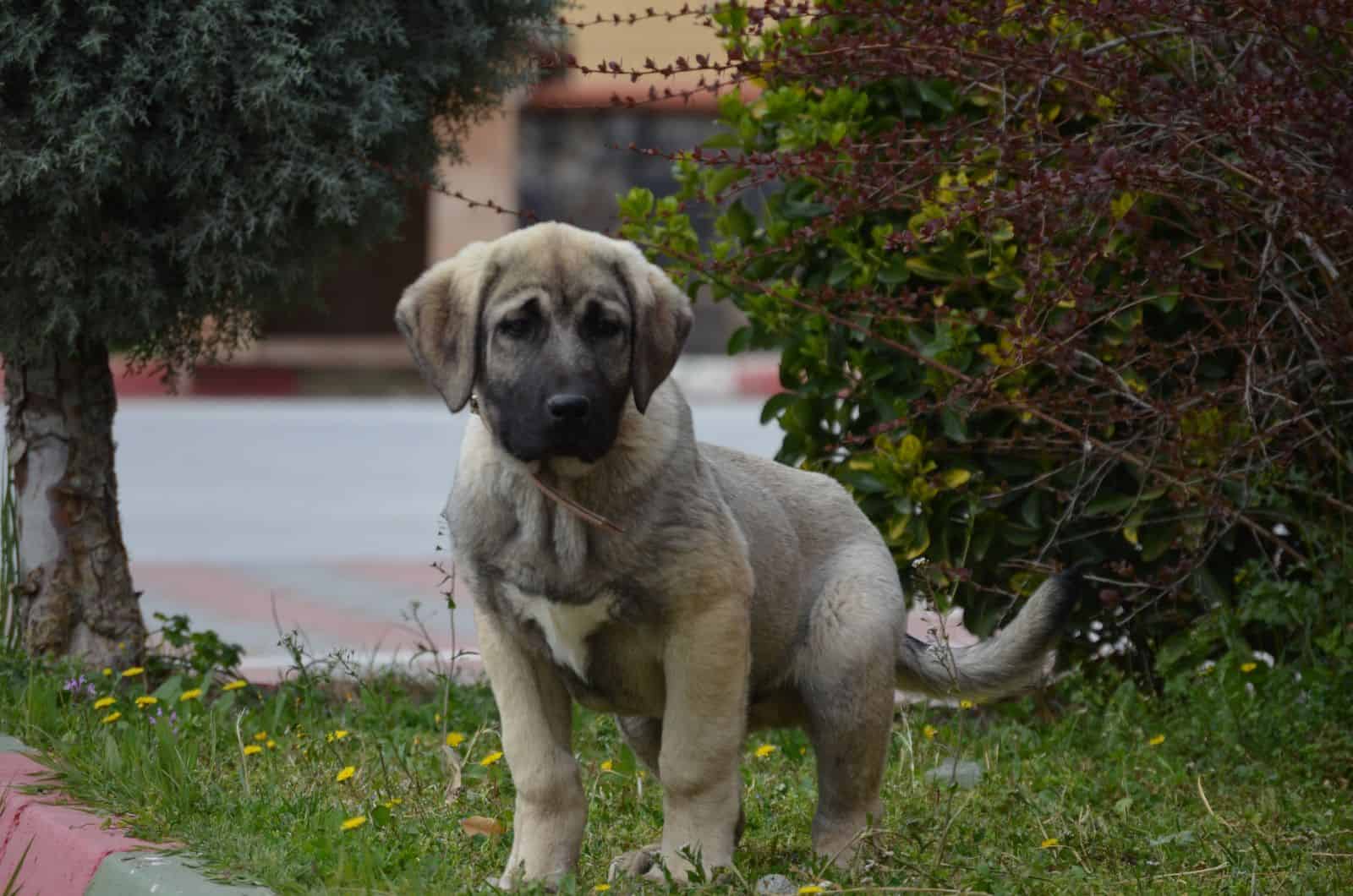
Your Anatolian Shepherd would begin to grow rather large during this time, and the first size differences between male and female dogs should begin to show.
Male puppies are about thirty percent bigger than female puppies at this point.
Keep an eye on your puppy to make sure it is getting the nutrition it needs, and be ready to visit your veterinarian as soon as you notice anything unusual, for example in its poop.
They would probably weigh between 69 and 85 pounds during the middle of this stage, but could even break through the hundred-pound mark as they get closer to nine months of age.
From Nine Months To 18 Months
Your Anatolian Shepherd should grow to its full size by the end of this period. They might nevertheless continue to put on weight and muscle even beyond 18 months of age.
Giant dogs are different from small dogs in the sense that they take much longer to fully mature. Anatolians could be considered teenagers at roughly 18 months, while, for example, Pugs reach full adulthood before they are one year old.
On average, an Anatolian Shepherd should weigh between 100 and 130 pounds at the time its first birthday comes around and that is generally close to the weight range it should maintain throughout its lifespan.
Adult Anatolian Shepherd
Your Anatolian Shepherd should be fully grown around the time it reaches 18 months of age.
During this time, its diet needs to be changed right away to prevent weight gain. It also needs to exercise as much as possible in order to expend the calories it intakes.
The American Kennel Club (AKC) predicts that females will be about 27 inches tall and weigh 80 to 120 pounds. On the other hand, male Anatolian Shepherds should be slightly larger, typically between 110 and 150 pounds in weight, and about 29 inches in height.
What Determines The Size Of An Anatolian Shepherd?
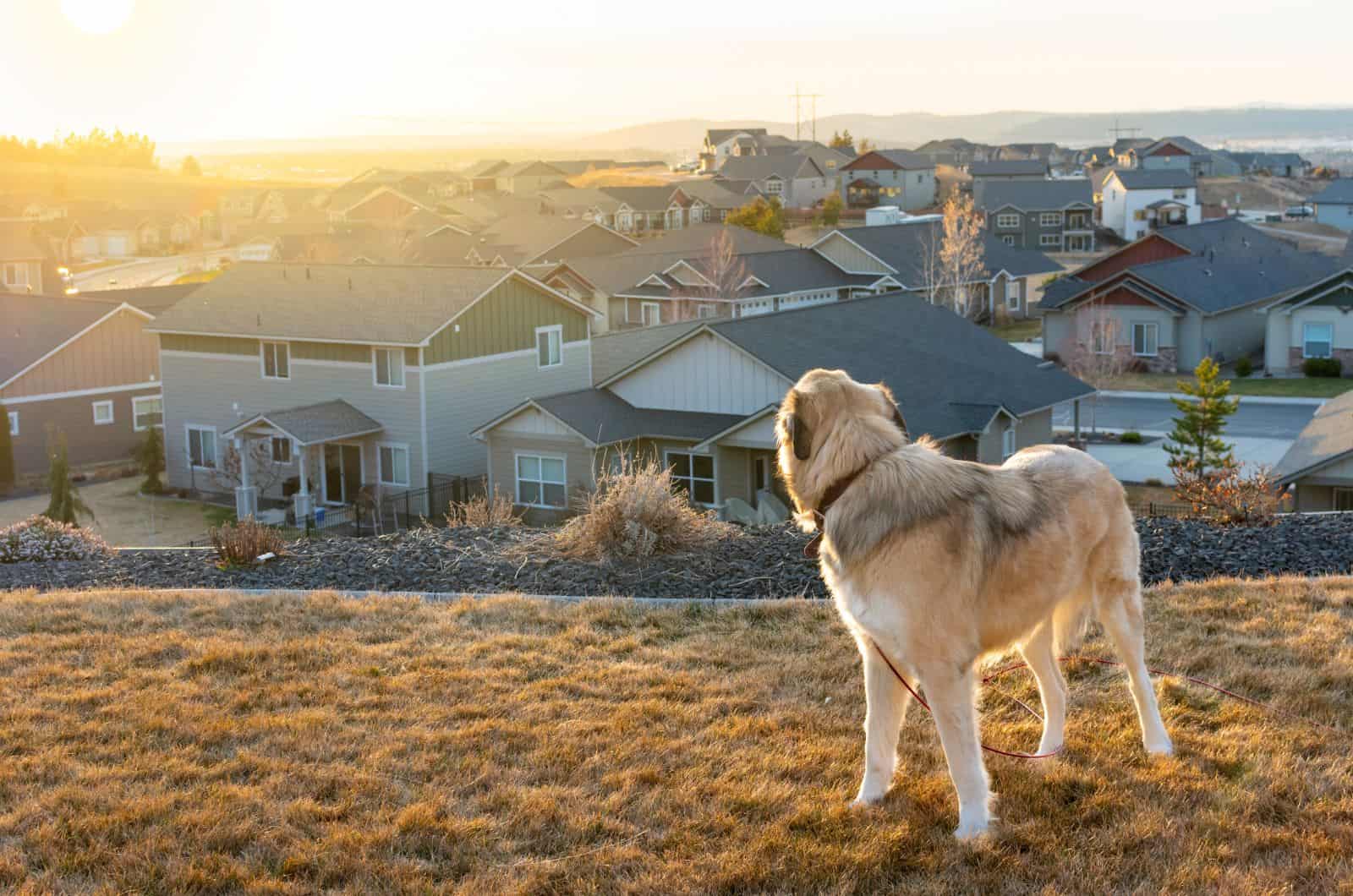
Not every Anatolian Shepherd puppy will grow up to be the same size. That is pretty obvious, but even if you look at the Anatolian Shepherd growth chart, you will notice that the listed weights are not single numbers, but rather number ranges.
This is designed to leave room for error because some puppies will be bigger than others and vice versa. But why exactly is that the case?
What are the things that affect Anatolian Shepherd puppy growth and size and make some dogs grow up to be smaller than others?
There are numerous factors that play a role in this, and at the end of the day, it is a complicated tapestry of reasons that are difficult to extricate from each other. However, we can safely say that some of those reasons are more impactful than others.
The four most important factors in shaping Anatolian Shepherd growth are genetics, gender, nutrition, and physical activity.
Genetics
The biological parents of your dog will influence some facets of their health and development genetically. For this reason, it’s a good idea to ask your breeder who your puppy’s biological parents are.
Generally, if the Anatolian Shepherd parents were larger dogs, then there is a good chance that their puppies will be sizeable, as well. Conversely, if the parents were closer to the lower end of the size range, their offspring will probably be slightly smaller.
There are, of course, no guarantees and exceptions are possible, but it’s still a good guideline to have. Especially since Anatolians are purebred, and that makes it much easier to determine their size than with mixed-breed puppies.
In addition to size, genetics can also influence some other things, including the health of the puppies.
Some health problems are known to be congenital, which is another reason to have a conversation with the breeder about your pup’s genetic background.
Gender
Gender has an impact on growth because female Anatolian Shepherds grow into adulthood more quickly than males, but they end up being smaller as adults.
Weighting between 80 and 120 pounds, adult female Anatolian Shepherds grow to a height of roughly 27 inches. Male Anatolian Shepherds, on the other hand, will weigh between 110 and 150 pounds and measure around 29 inches tall.
There are also other gender-influenced differences in weight that could arise later on.
For example, if your female Anatolian Shepherd gets pregnant and delivers puppies, her weight will vary dramatically in that period. She could also experience puppy blues, which could impact her appetite and therefore her weight.
Diet
You ought to feed your Anatolian Shepherd a serving of premium dog food with a decent amount of protein stated as the main ingredient. Given that they are a huge breed and must increase their muscle mass during their development, this is crucial.
They have a big appetite, but it is still within the normal parameters. If you notice that they are always hungry, despite eating regularly, there might be a problem.
For the sake of the dog’s health, the food should be free of artificial substances and fillers. Anatolian Shepherd dogs, for example, can have some carbohydrates, but not excessive amounts.
Given that they are often prone to having intestinal problems, these dogs should consume nutrient-rich foods like fruits and vegetables that will fill their intestines with fiber and help their metabolism run more smoothly.
Make sure that the quality and the amount of food are correct, and don’t fall for puppy eyes when they’re begging for a treat.
Physical Activity
An Anatolian Shepherd has a muscular build, thus exercise is quite important to them. Their muscles may atrophy if proper exercise is not maintained, which will damage their appearance, growth process, and overall health.
Be careful not to start your Anatolian Shepherd’s exercise program off too vigorously as this could lead to joint problems. They will, however, be playful, therefore it is wise to involve them in play and take them for walks frequently.
Health
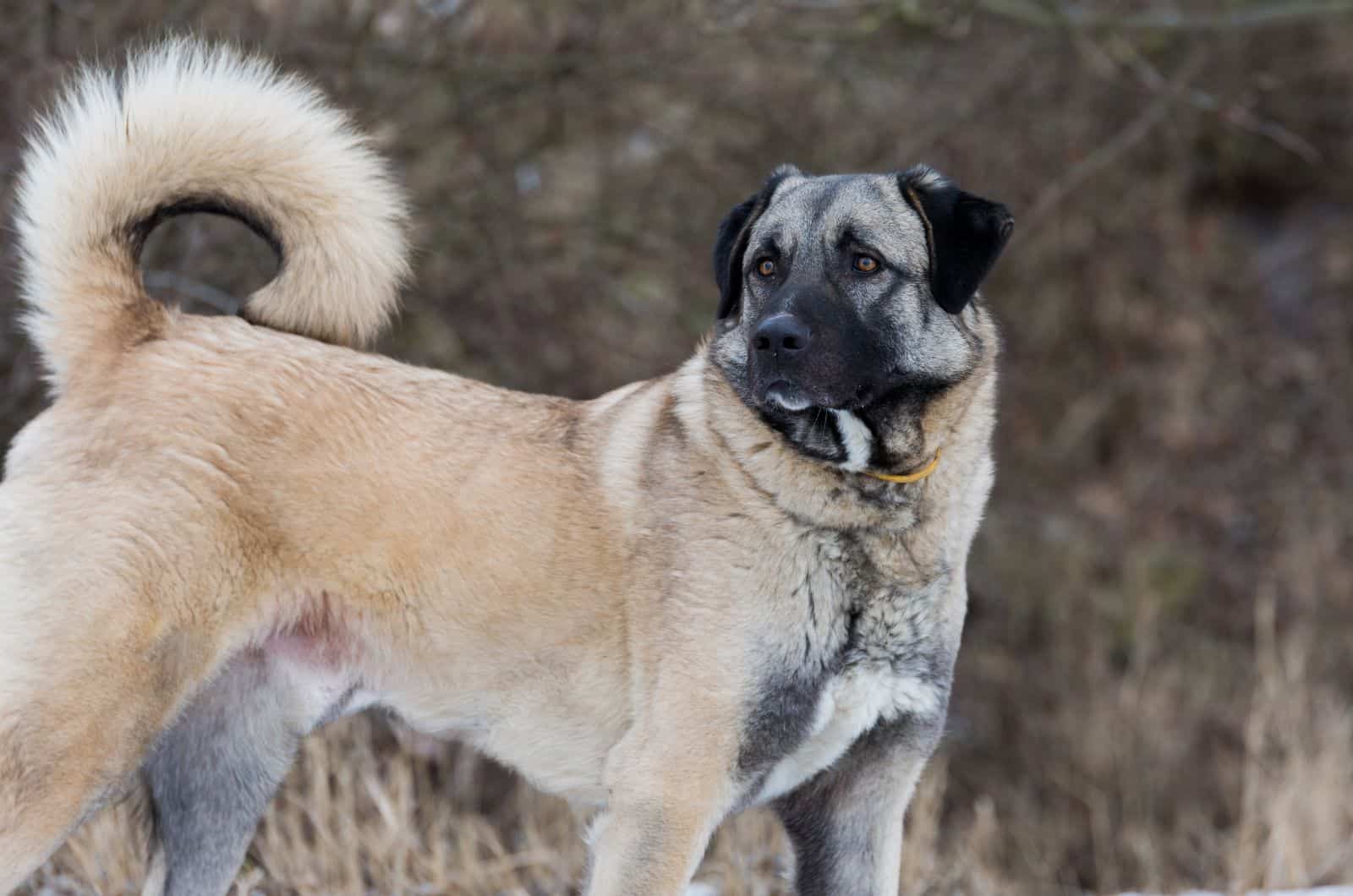
As we’ve already said, there are a number of health issues in dogs that are congenital, and some of those can affect their growth.
However, there are also those health conditions that crop up during a dog’s life and interrupt or limit its growth in one way or another.
On the other hand, there are health risks that are directly related to a dog’s weight, and some of them pose a threat to your Anatolian Shepherd. The two most obvious ones are obesity and underweight.
Obesity In Anatolian Shepherds
For Anatolian Shepherds, obesity is a significant health concern. It is a serious condition that can lead to heart disease, back pain, digestive and metabolic disorders, and joint issues.
Because of this, you should always pay close attention to your Anatolian’s weight and work to keep it in good shape. You can do this by providing the correct diet and exercise.
During puppyhood, these dogs should eat two to three cups of puppy food each day, spread out across the entire day. Once they are fully adult, this rises to three to four cups of adult dog food.
In both instances, the food should be divided into three equal meals.
The Anatolian Shepherd demands a lot of exercise due to their strong and muscular frame. Given their propensity to put on weight, this aspect is particularly crucial.
However, the exercises shouldn’t be too vigorous when they are very young, because this can harm the joints.
Underweight Anatolian Shepherds
All dogs, but especially pups, are susceptible to intestinal parasites like giardia or roundworms.
A puppy’s growth is slowed down by intestinal parasites because they consume the nutrients in its colon and also cause frequent diarrhea and malabsorption. It is critical to see a veterinarian as soon as you feel your dog may be experiencing any of these.
The good news is that these problems are quickly resolved once you have the appropriate medication on board. Your dog will regain lost weight and resume normal growth as soon as the parasites are removed.
Another common cause of Anatolians being lightweight is a mixed bloodline.
In the US, the Anatolian Shepherd is a rare dog breed. Unfortunately, some dishonest breeders offer puppies that are actually crosses between an Anatolian Shepherd and one or more other breeds but are marketed as pure-breed Anatolians.
In these cases, a DNA test is the only definitive answer.
Don’t be alarmed if it is a mixed breed; it is typical for it to grow up a little lighter and smaller.
Other Growth-Related Health Issues In Anatolian Shepherds
There are two more potential health issues that are associated with growing Anatolian Shepherds that we need to talk about. Those issues are growing pains and bloating.
Growing pains are caused by the unusually big bones found in some giant or large breed dogs. While your dog is still a puppy, these conditions are already apparent in the joints and bones.
Its bones and joints could be uncomfortable or extremely sensitive to the touch.
As a puppy, it can be very painful to deal with. However, there is still hope because many dogs outgrow it as they become older.
When a dog’s stomach is overfilled with gas, food, or liquid and twists as a result, bloating happens. It has the potential to intensify suddenly and move swiftly.
Male Vs. Female Anatolian Shepherd Size And Weight
Anatolian Shepherd males and females grow at different rates. In the first year, when your Anatolian Shepherd will have reached close to 95% of his adult size, you may anticipate fairly quick growth in males.
At about 18 months of age, this will begin to slow down before ceasing altogether. Males can reach adulthood weighing 110 to 140 pounds and standing 24 to 27 inches tall.
In contrast, you may anticipate an even higher growth rate in females during the first year. They will reach their adult height and weight sooner than males, but will not be as big, measuring 22 to 24 inches in height and weighing between 49 and 71 pounds.
Anatolian Shepherd Growth Chart FAQ
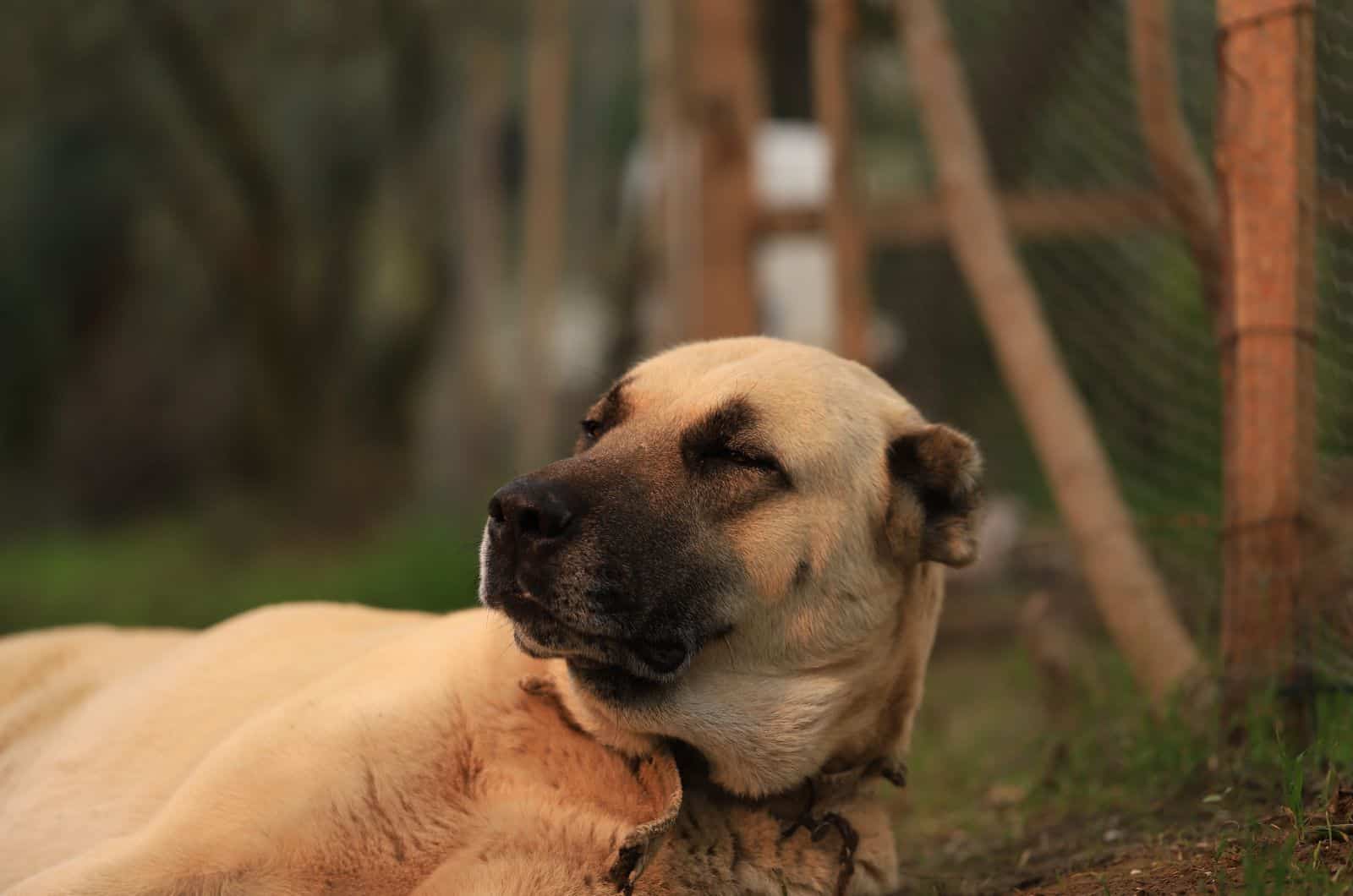
After covering a lot of information related to the Anatolian Shepherd growth chart in the article so far, we wanted to turn to some of the most frequently asked questions about the matter.
These are some of the queries that have filled the internet, coming from either current or prospective Anatolian Shepherd owners who wanted to know more about their growth, size, and weight.
Why Do I Need An Anatolian Shepherd Growth Chart?
Observing a puppy’s growth during those crucial early months is one of the most important facets of dog ownership. Given that the Anatolian Shepherd is a huge dog, you need to allow enough room for them to move around.
You may monitor your puppy’s growth and make sure that its weight is increasing correctly by frequently weighing it and using ourAnatolian Shepherd growth chart as a sort of weight calculator.
Not to mention all the other factors that need your focus, including its diet, degree of exercise, training, etc. Knowing how big and heavy your Anatolian Shepherd should be at a certain age will help you plan its diet, living arrangements, and budget.
Is The Anatolian Shepherd The Largest Dog Breed?
There are several ways that you can look at the question of what the largest dog breed in the world is.
Some dogs are taller, others are heavier, and there isn’t a definitive answer on what is the clear number one. For example, the Irish Wolfhound, reaching up to 32 inches at the withers, is considered to be the tallest dog breed on the planet.
Anatolian Shepherds can only reach about 27 inches, so that makes them fall significantly short of the tallest dog breed title.
On the other hand, Saint Bernards are often cited as the heaviest dog breed around, with their adult weights sometimes reaching up to 240 pounds! That is about a hundred pounds more than a fully grown Anatolian.
But when talking in a general sense and trying to include the dog’s overall build in the criteria for it being the largest, we cannot simply dismiss the Anatolian Shepherd that easily. They are certainly one of the largest dog breeds in the world, and they deserve their spot on that list.
Does Spaying/Neutering Affect The Growth Of An Anatolian Shepherd?
Before having your Anatolian Shepherd spayed or neutered, you should wait until they are at least one year old. The male would have to go through the required physical changes brought on by testosterone by this point.
It is well known that testosterone promotes growth, so if the procedure is done prematurely, there is a risk of interrupting the Anatolian Shepherd male dog’s natural growth process.
On the other hand, female Anatolian Shepherds would have experienced their first heat cycle by the time they are ready to be spayed, but they would likely be too young to carry the puppies to term.
What To Do If My Anatolian Shepherd Is Not The Right Weight?
The exact size of Anatolians when they reach adulthood is difficult to determine in advance. Nevertheless, we know that newborn Anatolian shepherds typically weigh around two pounds.
You should absolutely visit your veterinarian to find out the cause of the problem if you have any reason to think that your Anatolian Shepherd may not be within the proper weight range.
Your dog may exhibit odd behavior, and its poop may also be weird.
How To Properly Weigh My Anatolian Shepherd?
It’s crucial to measure your dog since you want to make sure that he is progressing according to plan.
You can measure his weight over the course of his life as a good strategy to assure his good health.
There are two ways to gauge your Anatolian Shepherd’s mass. The first method is rather simple and it only involves putting your dog on a scale directly.
However, if for some reason, your dog is unable to get on top of a scale itself, you can climb on one while your holding your dog, note the weight, and then subtract your own weight from that number.
Your dog’s weight will be determined by the difference between these two values. When your dog gets a little older and can no longer fit on a scale, this might be more appropriate.
The accuracy of this approach is, however, the lowest of the two, and obviously, lifting a 140-pound Anatolian Shepherd isn’t the most practical thing ever.
How To Properly Measure The Height Of My Anatolian Shepherd?
The height of your dog is calculated from the ground up to the withers. The area of your dog’s shoulder blades closest to the withers is the tallest point of its body.
Make sure your dog is standing straight before placing the measuring tape on the ground and bringing it straight up toward the withers.
Conclusion
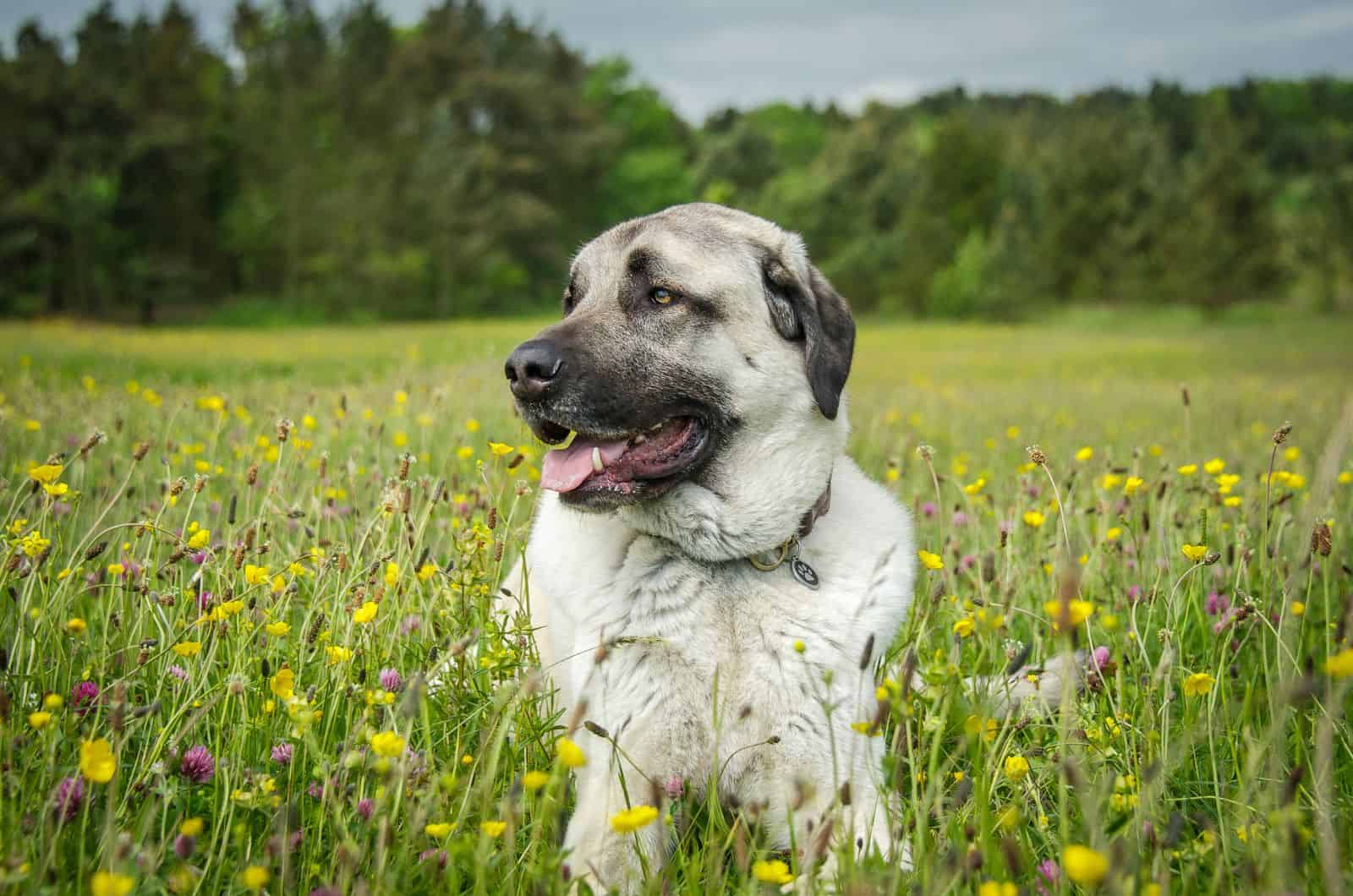
The Anatolian Shepherd growth chart is a terrific tool to have if you own one of these huge dogs.
The size of an Anatolian Shepherd could be a big worry for folks who aren’t used to handling big dogs. This is a major reason why they are not recommended as first-time pets for untrained owners.
Despite having great characteristics, Anatolian Shepherds will nonetheless be a challenge for new dog owners. An Anatolian Shepherd requires twice as much maintenance as a smaller breed dog.
You should therefore familiarize yourself with them beforehand and learn what to anticipate. You can decide what accessories, food, and care are needed for the dog by knowing its size.
You can simply track your puppy’s growth at any moment by comparing the chart’s figures to your puppy’s real weight and height with the help of this Anatolian Shepherd growth chart.
The size chart might also help you focus your efforts on enhancing the health of your Anatolian Shepherd. Your chances of successfully resolving more serious health issues will increase if you catch them early.
Obesity or being underweight can occasionally be a symptom of a more serious medical condition, and this chart can help you spot it.
Read Next:
• Anatolian Shepherd Colors: Picking The Prettiest Shade
• Everything You Need To Know About The Anatolian Shepherd Lab Mix
